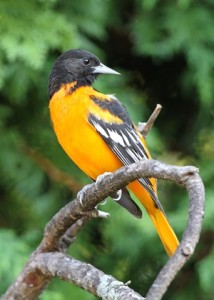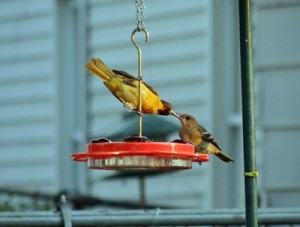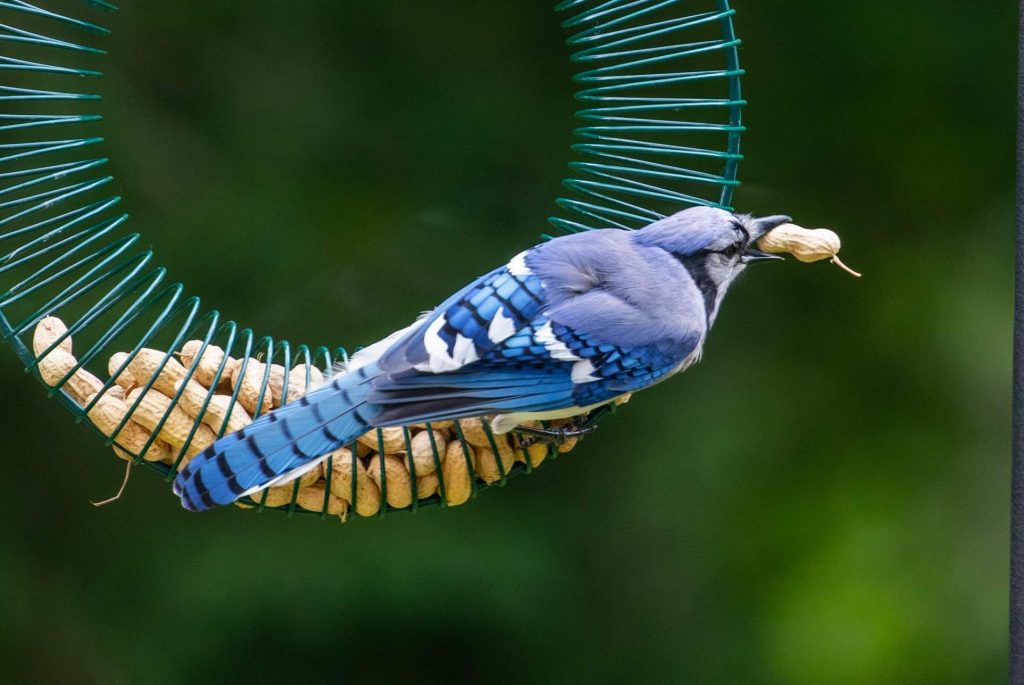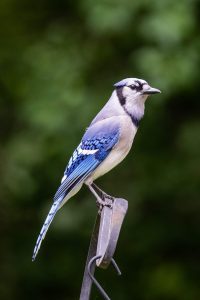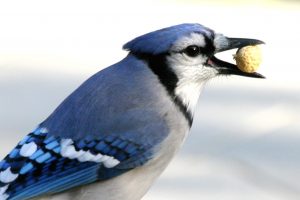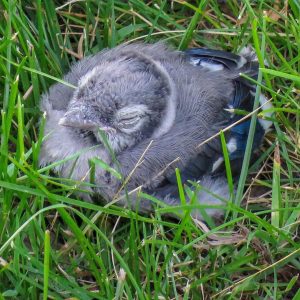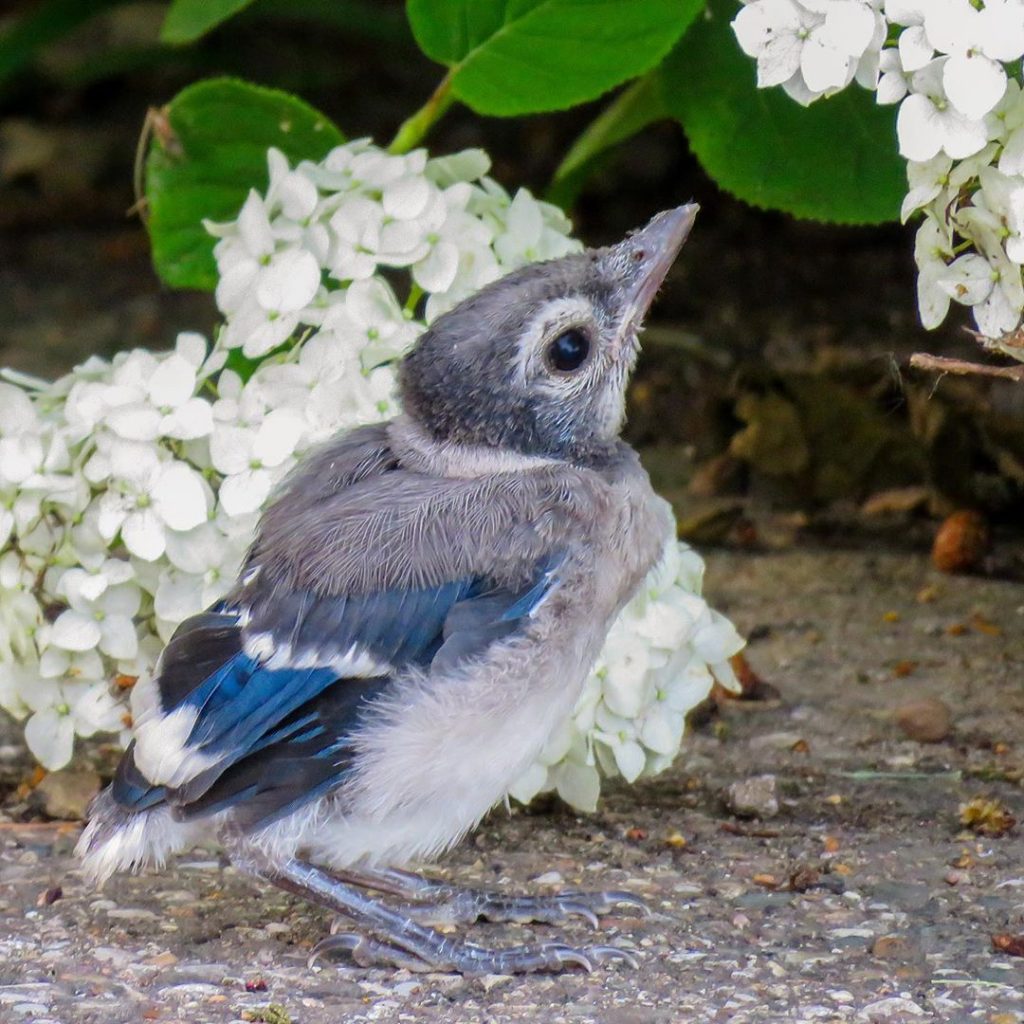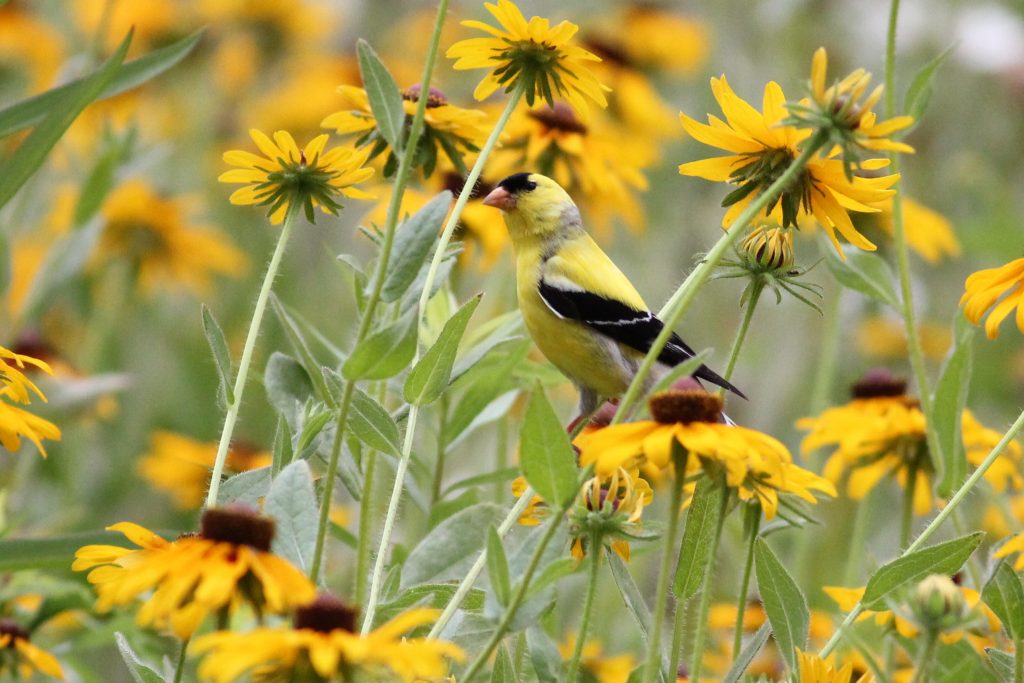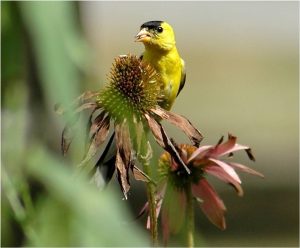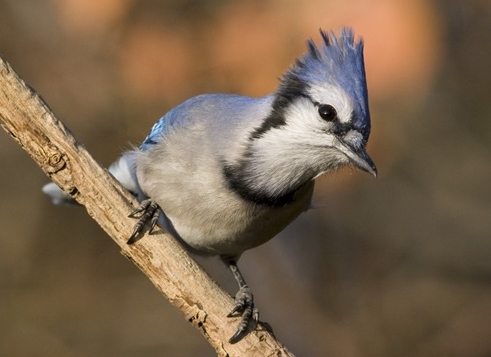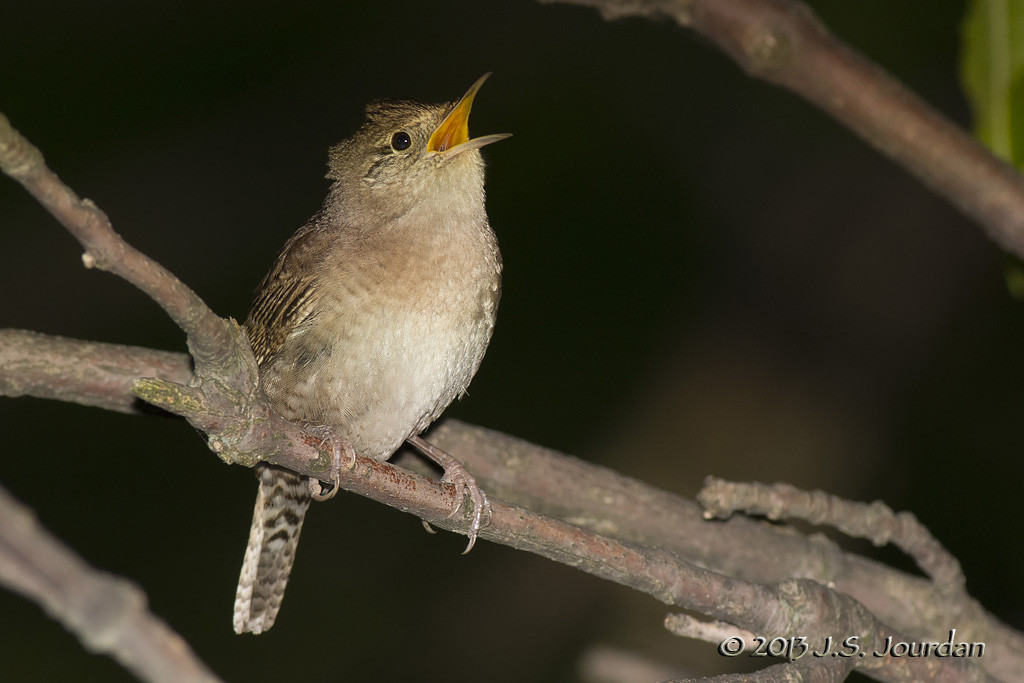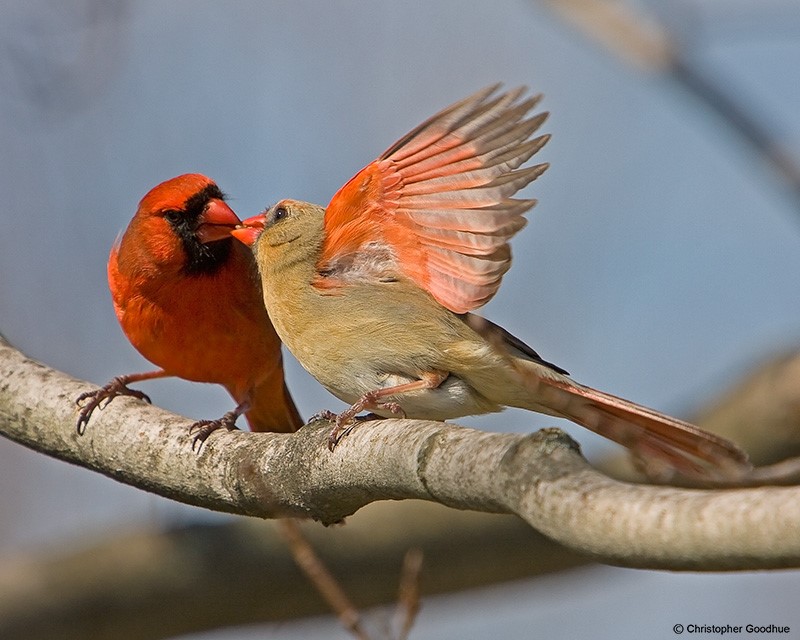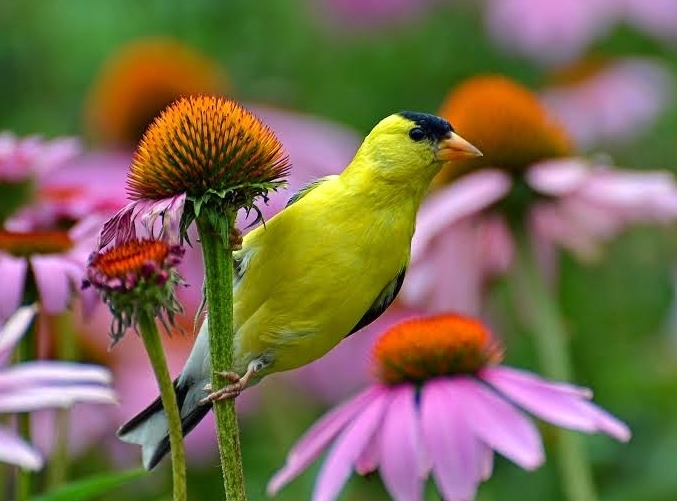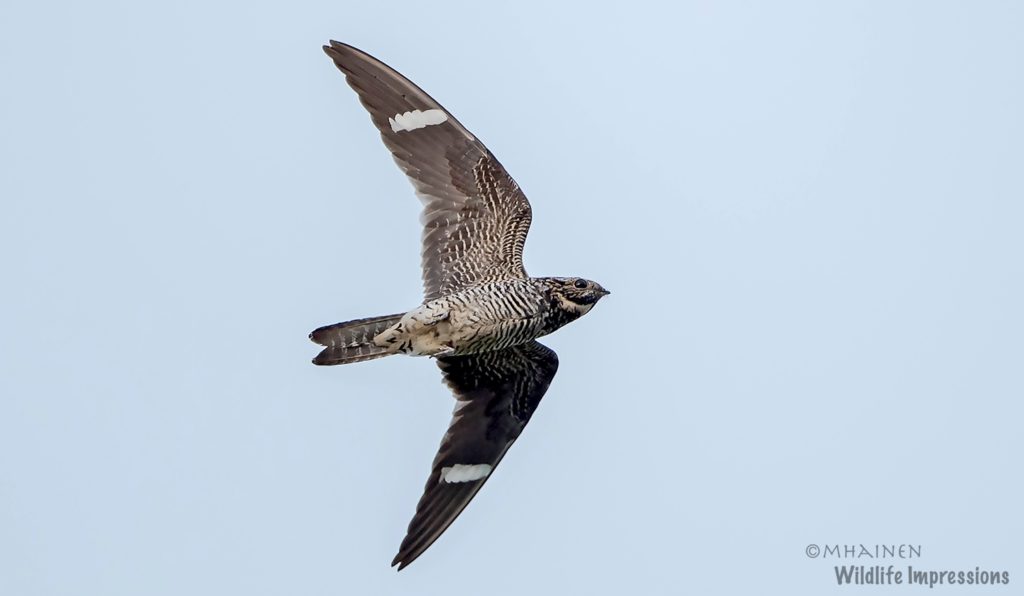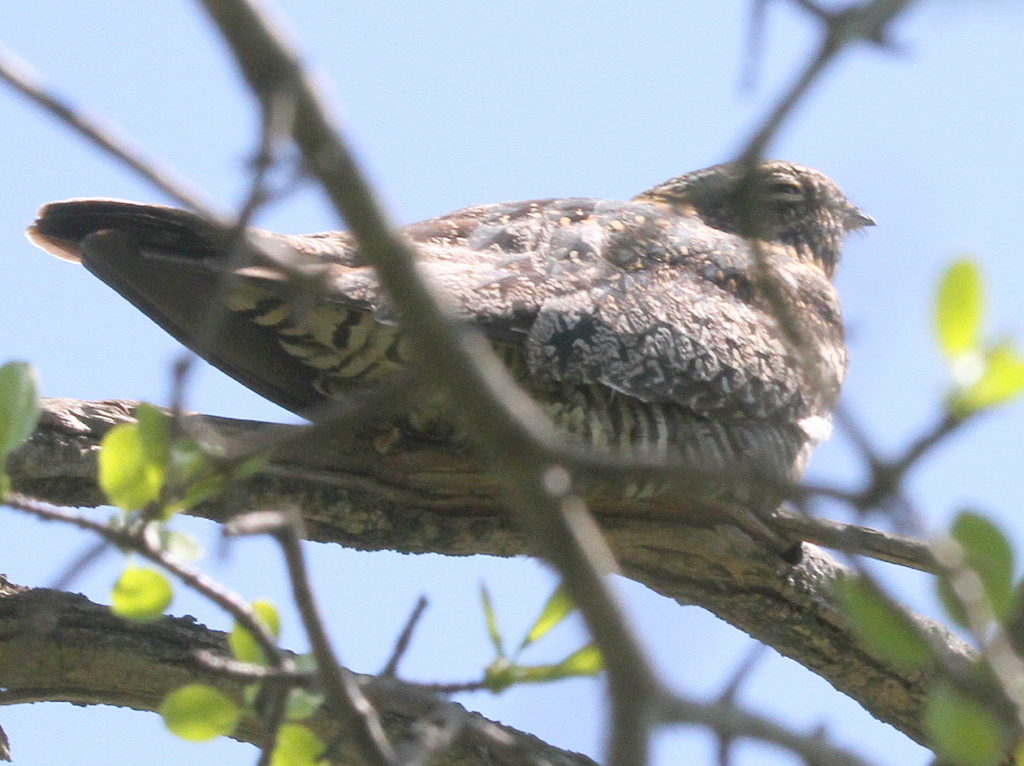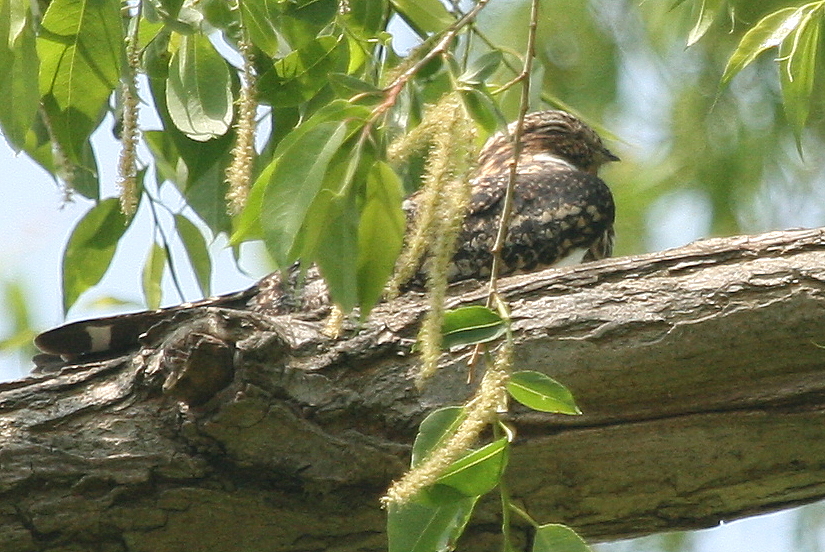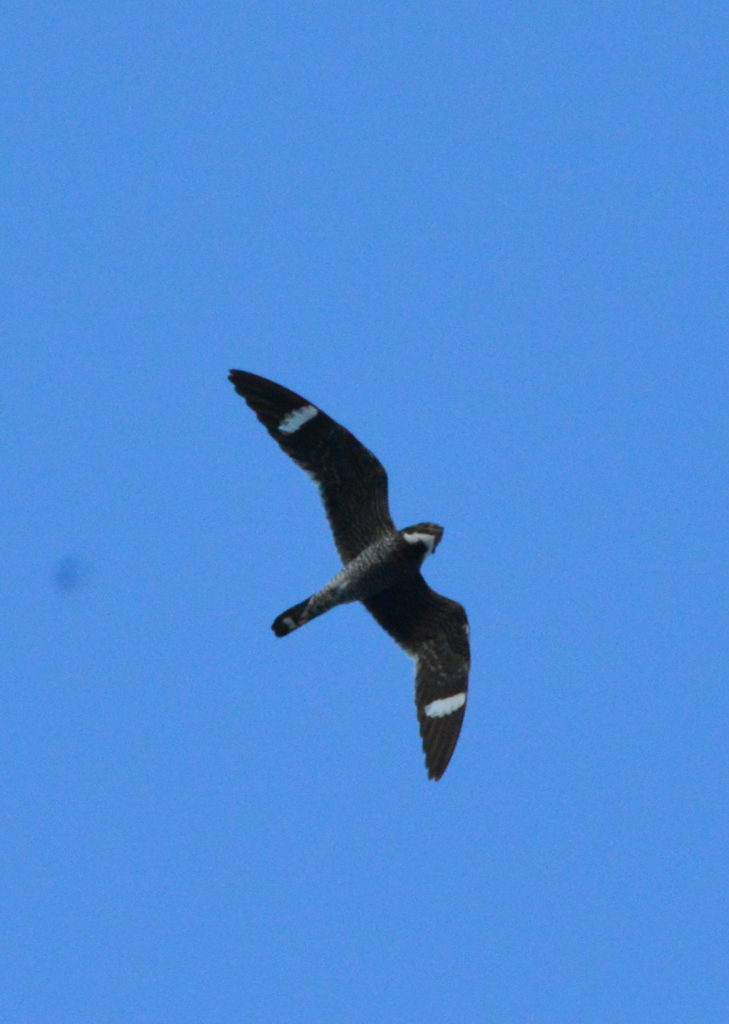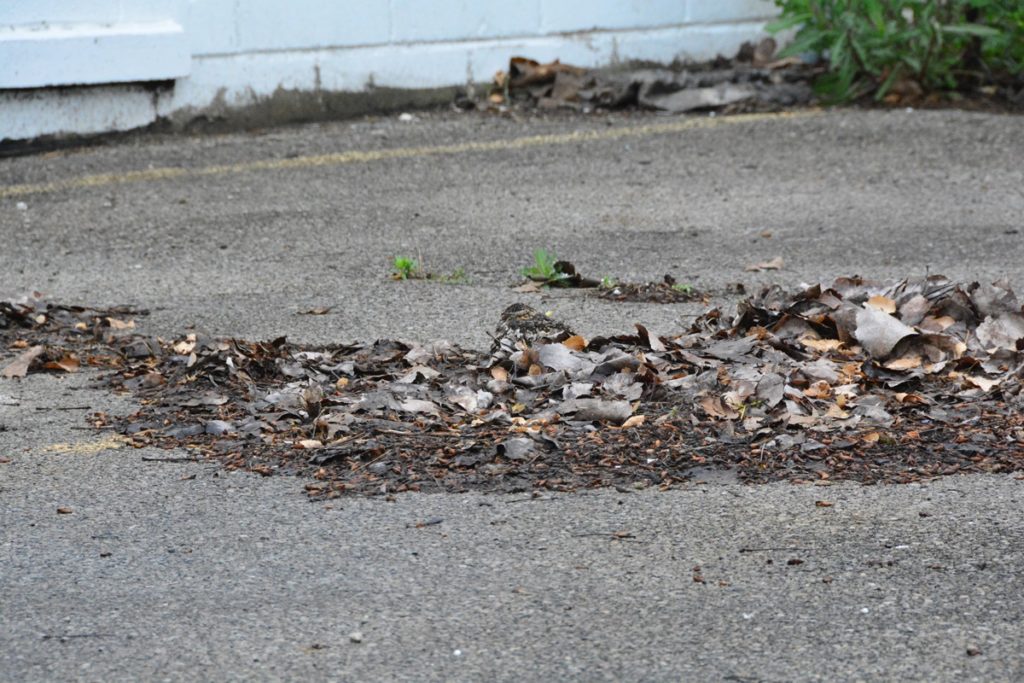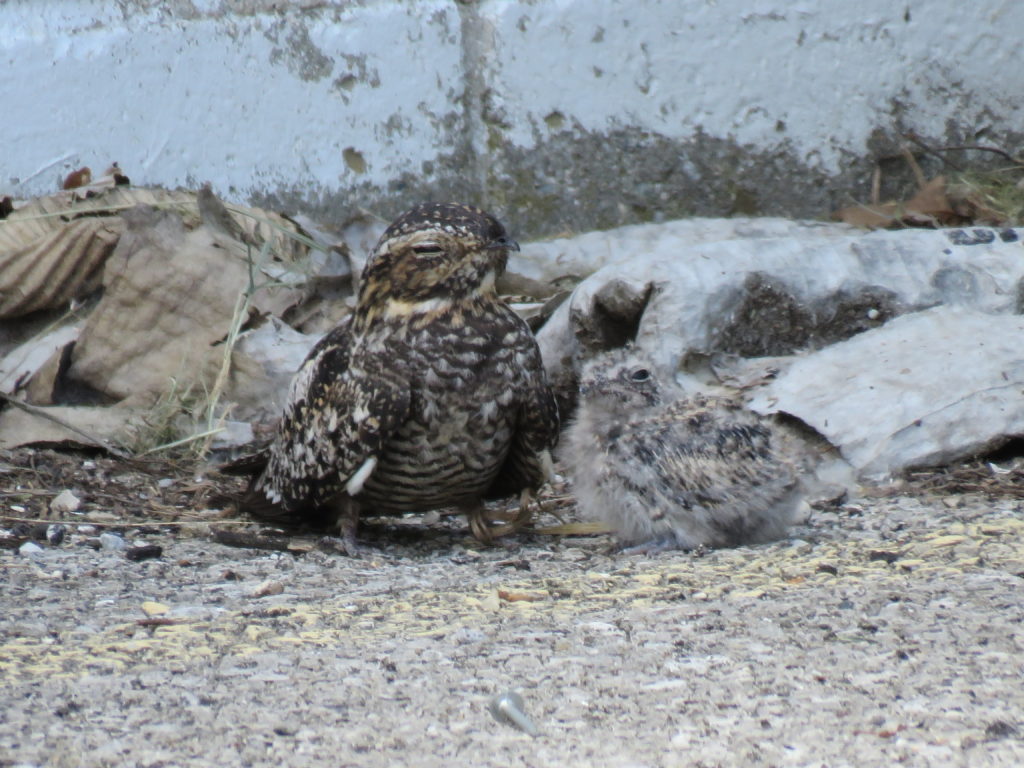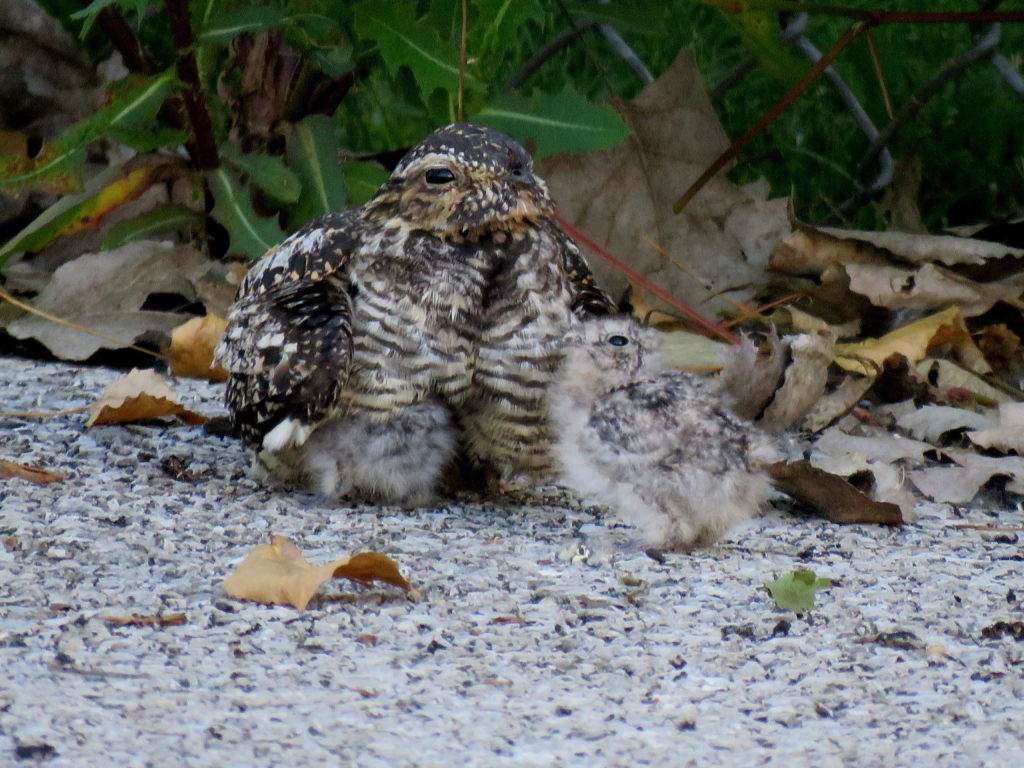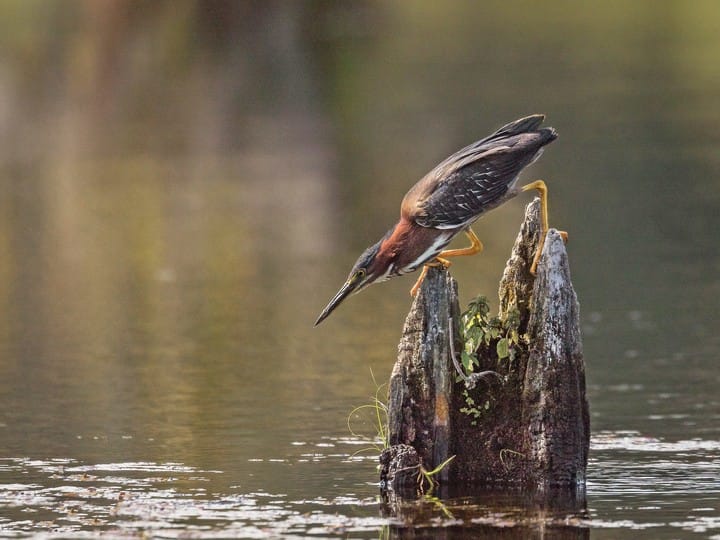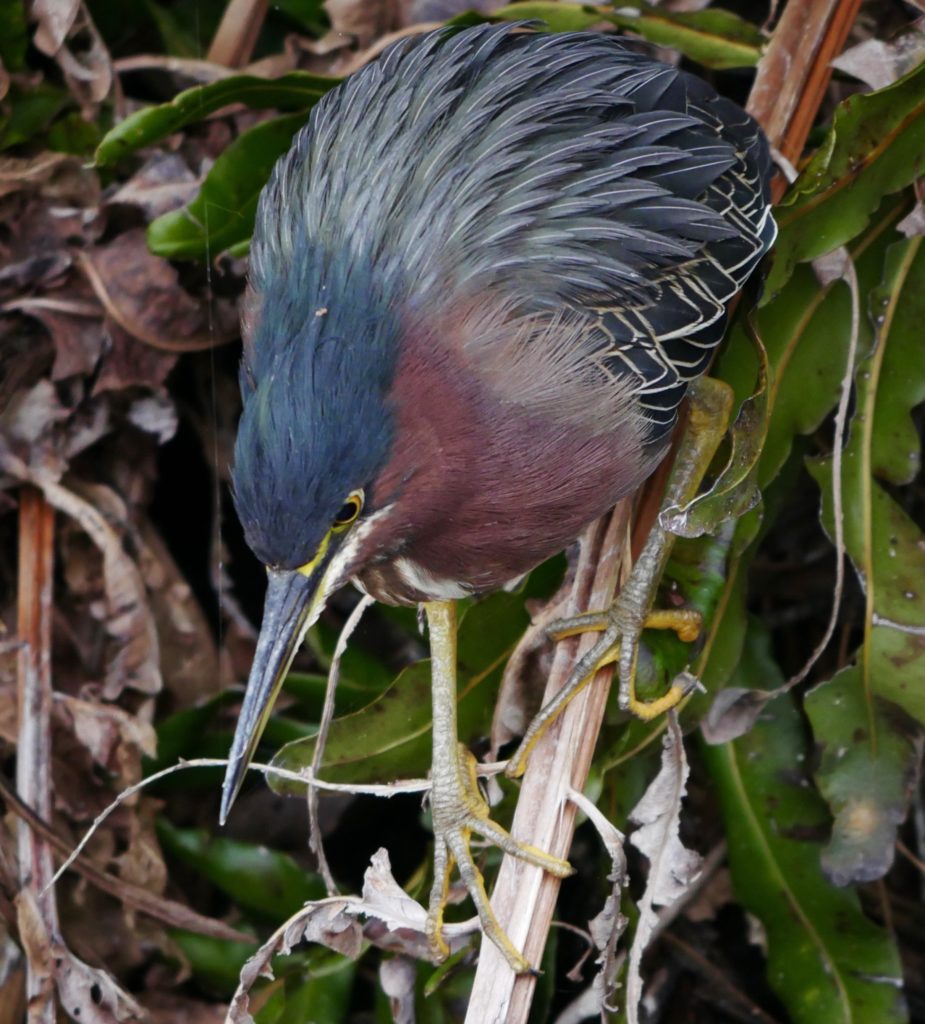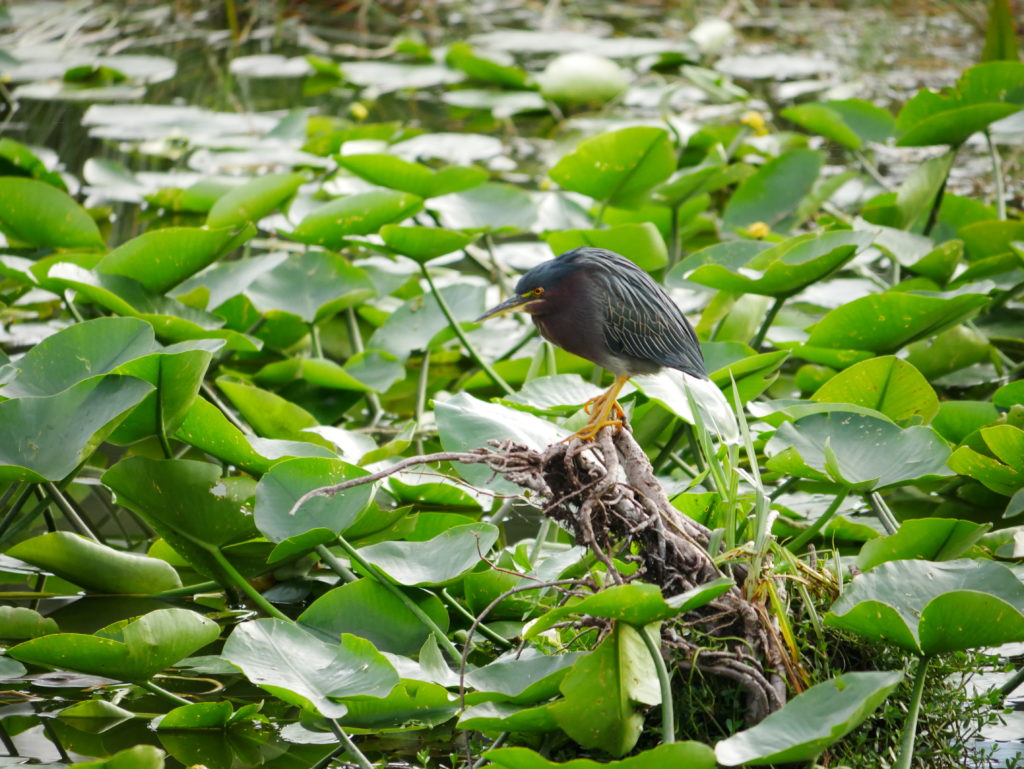In search of an adequate food supply to raise a family, thousands of Baltimore Orioles migrate from Central America to Michigan during springtime. What does it take to attract these vibrantly plumaged orange and black birds to our yard?
When the male arrives, he is in search of a territory that will provide the basics – food, water, shelter and places to raise young – those elements allow him to carry on his genetics, the sole purpose of migration.
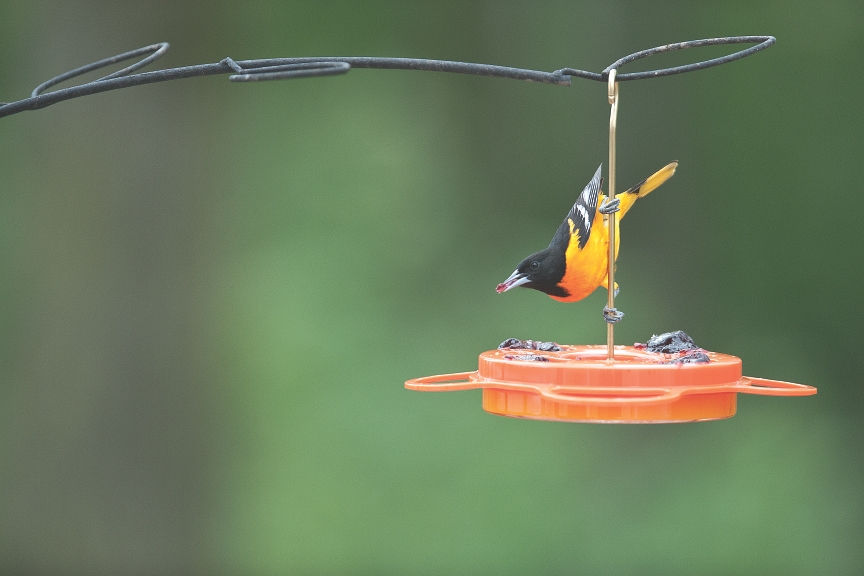
Undoubtedly, you will hear Orioles before you see them. The male Baltimore Oriole’s song consists of a short series of paired notes, repeated 2–7 times, lasting 1–2 seconds. The pure, liquid, flute-like sounds have a full, rich tone. Once you accustom yourself to its song, you will be able to search for them visually.
Orioles can be found in open woodlands, woodland edges, and riparian woodlands and in our shade trees in suburban neighborhoods. They do not prefer deep forests.

Because of Orioles’ habit of feeding at treetop level, consummate birder Pete Dunne nicknamed them The Eastern Arboreal Oriole. So why the nickname? This is a bird that is wedded to dense leaf canopy. Males sing from exposed perches to warn other males of proclaimed territory. Both the male and female land on the tallest point of a tree before slipping into the dense canopy to begin foraging for insects. These include caterpillars that emerge to eat unfurling new growth on trees.
Oak trees in particular offer more diversity of caterpillars than any other tree in Southeast Michigan. While an oak may not mature to full size during your lifetime, planting it for its food value to birds is an investment in the future of birds. Orioles eat many pest species, including tent caterpillars, gypsy moth caterpillars, fall webworms, spiny elm caterpillars, and the larvae within plant galls. Larger caterpillars are a challenge for some birds, but the Oriole has many strategies for eating them. The birds’ beak is quite pointed and is used to slice through the exterior of a caterpillar, allowing it to eat the nutritional insides. Orioles often have a feeding limb, a favored place to feed, as can be attested to by dried caterpillar skins accumulated on the branch. Orioles eat other insects as well including beetles, crickets, grasshoppers, moths, and flies and non-insects including spiders, snails, and other small invertebrates.
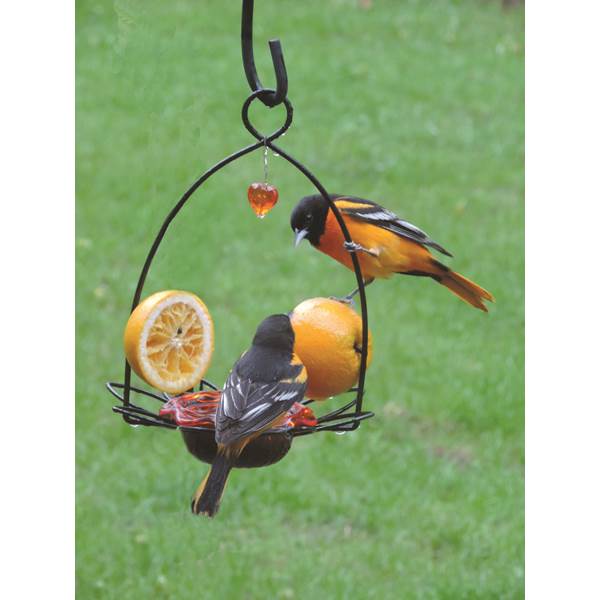
Baltimore Orioles sometimes use their slender beaks to feed in an unusual way, called “gaping”: they stab the closed bill into soft fruits, and then open their mouths to cut a juicy swath from which they drink with their brushy-tipped tongues. Fruits that are especially attractive to Orioles are those that are dark in color. A variety of these plants can offer the high lipid fat that the birds need for fall migration – dogwoods, chokeberry, elderberry, and viburnums. Native plants grow native caterpillars in abundance and therefore, are the perfect choice when planning your bird-friendly yard.
Orioles also have an early spring feeding strategy– they drink from the wells of Yellow-bellied Sapsuckers. These woodpeckers create purposeful holes to encourage sap to run, which in turn attracts insects, an additional food source for the birds.
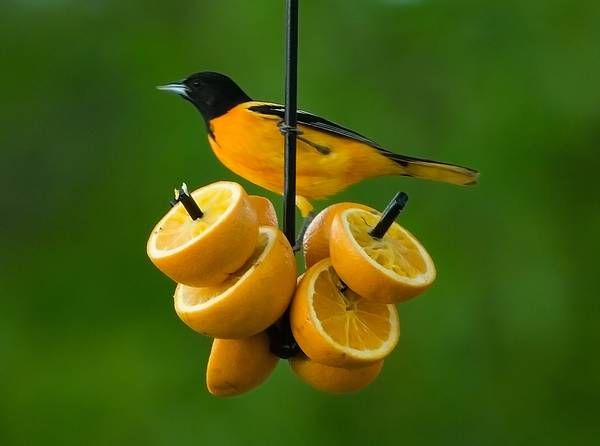
For a closer look at Orioles, you can place feeders in your yard that offer the same types of foods they find in the wild. Dark grape jelly can be offered in plastic and glass dishes, oranges can be placed on pronged feeders, and nectar feeders will round out the offerings.
Mealworms are another great food source to offer – the birds will take the worms back to their young as well as bring the young to the feeders once they are fledged. Your feeding station will be most successful if it is some distance away from other feeding stations. Your feeding station should be set up before the first week of May to attract the abundance of Orioles that migrate at that time. Once migration is over and the local birds have established their territory, you may find that the mated pair (or two if you are lucky) near your home can be very skittish at feeders. As a bonus, other birds will enjoy these offerings including House Finches, Cardinals and Rose-breasted Grosbeaks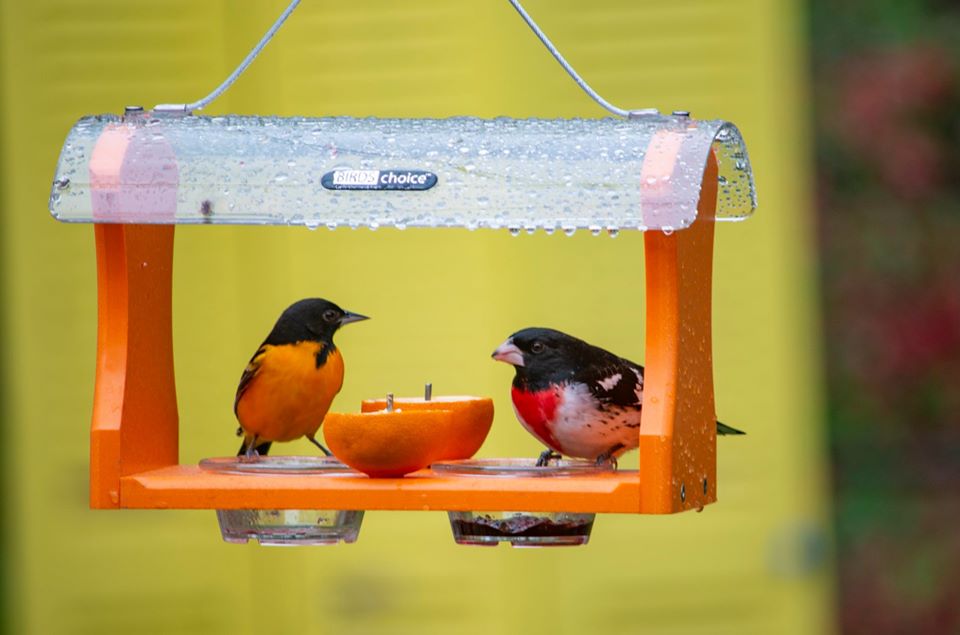 .
.
Female Orioles are responsible for the building of the nest that will hold their eggs and resultant young, usually four in number. Long strips of plant material are the backbone of their nest. Most frequently they use milkweed and dogbane, clipping the plant at the base just above where they are holding it firmly in their feet. Pulling up, they create strips that are then flown to the nest site and tied in place. Leave last years’ milkweed and dogbane standing into the spring so that these birds can utilize them, or clip it and add it to your nesting material basket. Elms were the favorite trees of Orioles for nest building before Dutch elm disease took its toll on them. Now, they favor maples, willows, poplars and oaks. Placed at the tip of branches, the sock-like structure has the advantage of being difficult for predators to reach.
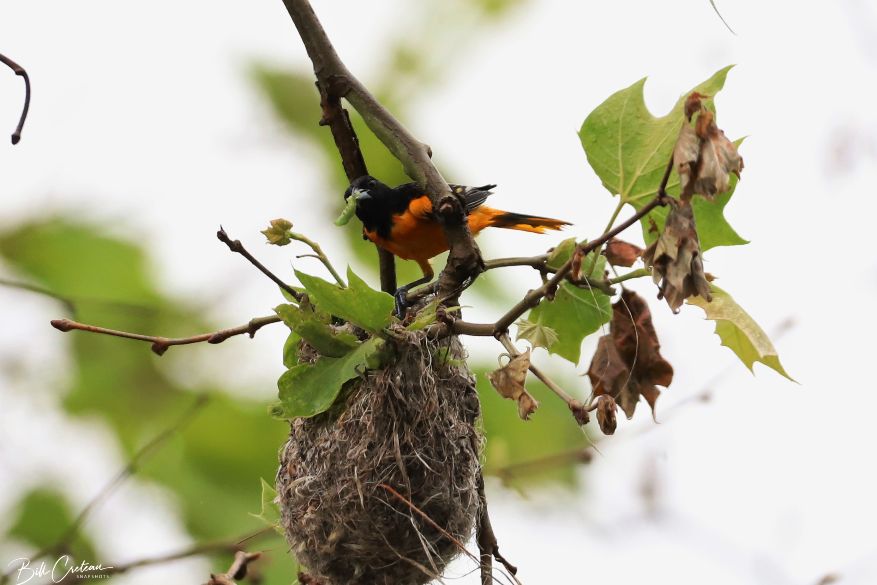
The nest is a work of art, a suspended pouch woven as two separate walls. The female uses a shuttling motion to create the walls and then stitches the two halves together. The inside plant material can consist of dandelion fluff, the downy material from willows and poplars and short strips of grape bark. Natural materials can be placed in a suet basket and placed where you can enjoy these beauties helping themselves. Short strips of natural fibers (avoid polyester), hair, and string may be used by Orioles in nest construction. Fishing line and dryer lint are two materials not to be used. The fishing line is too thin and can easily entangle the bird. Dryer lint has materials that will hold moisture and would cool eggs and babies instead of keeping them warm as natural materials would. The female builds the nest over a period of about eight days. Nests are not reused, although some of the nesting material might be used in the new structure.
Males keep a watchful eye on the female as she works, mating with her when she allows. Incubation is done by the female entirely, lasting a period of 12 to 14 days. Both parents feed the young for the next two weeks, during which time the naked hatchlings develop into fully feathered adult sized birds.
Now it is the male’s turn to take over as the young follow him for lessons on where to look for food. The female spends her time eating to regain the weight she lost and preparing herself for fall migration.
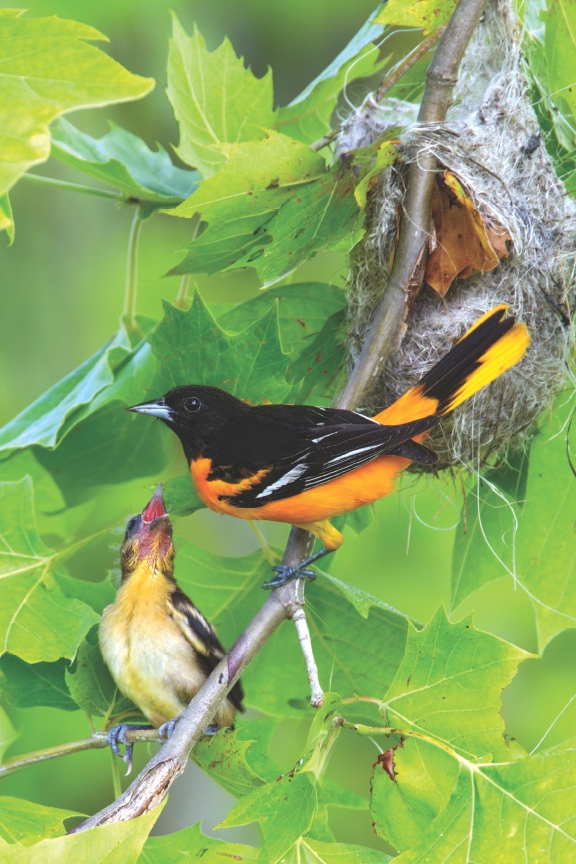
Orioles leave early back to their southerly home, our yards quieter without their songs as early as the end of August.
Well worth the effort to attract, Orioles make our time in the yard a special time indeed!
Thanks to Bill Creteau, John Graffius, Wayne Hoch and Randy Repicky for sharing their photos
Have you joined our email list? Click here to sign up, it’s free and gives you access to sales, coupons, nature news, events, and more!


